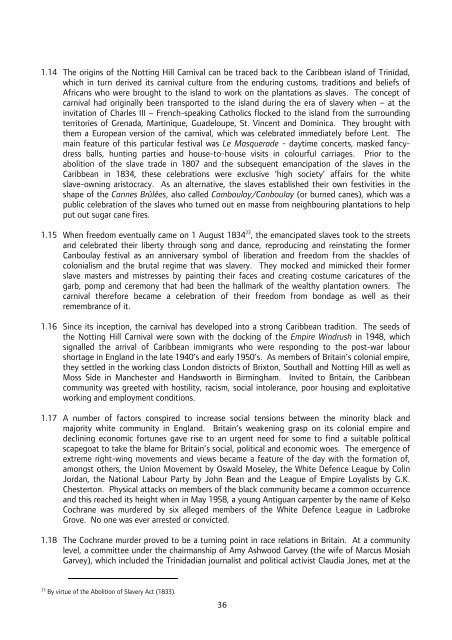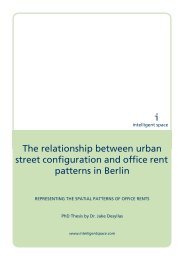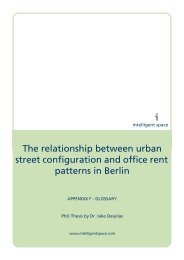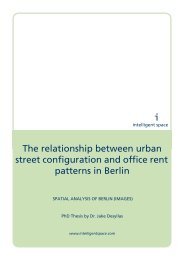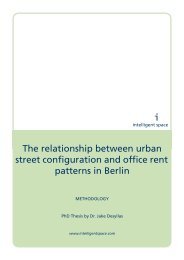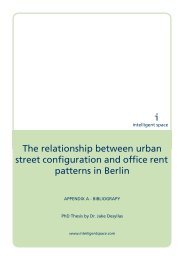Notting Hill Carnival Strategic Review - Intelligent Space
Notting Hill Carnival Strategic Review - Intelligent Space
Notting Hill Carnival Strategic Review - Intelligent Space
You also want an ePaper? Increase the reach of your titles
YUMPU automatically turns print PDFs into web optimized ePapers that Google loves.
1.14 The origins of the <strong>Notting</strong> <strong>Hill</strong> <strong>Carnival</strong> can be traced back to the Caribbean island of Trinidad,<br />
which in turn derived its carnival culture from the enduring customs, traditions and beliefs of<br />
Africans who were brought to the island to work on the plantations as slaves. The concept of<br />
carnival had originally been transported to the island during the era of slavery when – at the<br />
invitation of Charles III – French-speaking Catholics flocked to the island from the surrounding<br />
territories of Grenada, Martinique, Guadeloupe, St. Vincent and Dominica. They brought with<br />
them a European version of the carnival, which was celebrated immediately before Lent. The<br />
main feature of this particular festival was Le Masquerade - daytime concerts, masked fancydress<br />
balls, hunting parties and house-to-house visits in colourful carriages. Prior to the<br />
abolition of the slave trade in 1807 and the subsequent emancipation of the slaves in the<br />
Caribbean in 1834, these celebrations were exclusive ‘high society’ affairs for the white<br />
slave-owning aristocracy. As an alternative, the slaves established their own festivities in the<br />
shape of the Cannes Brûlées, also called Camboulay/Canboulay (or burned canes), which was a<br />
public celebration of the slaves who turned out en masse from neighbouring plantations to help<br />
put out sugar cane fires.<br />
1.15 When freedom eventually came on 1 August 1834 23 , the emancipated slaves took to the streets<br />
and celebrated their liberty through song and dance, reproducing and reinstating the former<br />
Canboulay festival as an anniversary symbol of liberation and freedom from the shackles of<br />
colonialism and the brutal regime that was slavery. They mocked and mimicked their former<br />
slave masters and mistresses by painting their faces and creating costume caricatures of the<br />
garb, pomp and ceremony that had been the hallmark of the wealthy plantation owners. The<br />
carnival therefore became a celebration of their freedom from bondage as well as their<br />
remembrance of it.<br />
1.16 Since its inception, the carnival has developed into a strong Caribbean tradition. The seeds of<br />
the <strong>Notting</strong> <strong>Hill</strong> <strong>Carnival</strong> were sown with the docking of the Empire Windrush in 1948, which<br />
signalled the arrival of Caribbean immigrants who were responding to the post-war labour<br />
shortage in England in the late 1940’s and early 1950’s. As members of Britain’s colonial empire,<br />
they settled in the working class London districts of Brixton, Southall and <strong>Notting</strong> <strong>Hill</strong> as well as<br />
Moss Side in Manchester and Handsworth in Birmingham. Invited to Britain, the Caribbean<br />
community was greeted with hostility, racism, social intolerance, poor housing and exploitative<br />
working and employment conditions.<br />
1.17 A number of factors conspired to increase social tensions between the minority black and<br />
majority white community in England. Britain’s weakening grasp on its colonial empire and<br />
declining economic fortunes gave rise to an urgent need for some to find a suitable political<br />
scapegoat to take the blame for Britain’s social, political and economic woes. The emergence of<br />
extreme right-wing movements and views became a feature of the day with the formation of,<br />
amongst others, the Union Movement by Oswald Moseley, the White Defence League by Colin<br />
Jordan, the National Labour Party by John Bean and the League of Empire Loyalists by G.K.<br />
Chesterton. Physical attacks on members of the black community became a common occurrence<br />
and this reached its height when in May 1958, a young Antiguan carpenter by the name of Kelso<br />
Cochrane was murdered by six alleged members of the White Defence League in Ladbroke<br />
Grove. No one was ever arrested or convicted.<br />
1.18 The Cochrane murder proved to be a turning point in race relations in Britain. At a community<br />
level, a committee under the chairmanship of Amy Ashwood Garvey (the wife of Marcus Mosiah<br />
Garvey), which included the Trinidadian journalist and political activist Claudia Jones, met at the<br />
23<br />
By virtue of the Abolition of Slavery Act (1833).<br />
36


